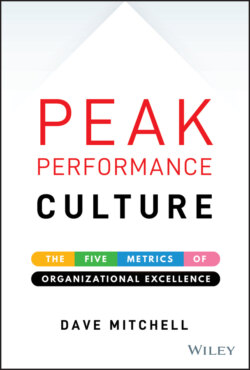Читать книгу Peak Performance Culture - Dave Mitchell - Страница 10
THE PLAN REQUIRES WORK
ОглавлениеIn my experience, the momentum for organizational improvement is high during the initial parts of the project, but wanes as ideas and opinions give way to the minutia of actionable items. This book has the potential to generate robust and important discussion among executives about the opportunities to improve organizational performance.
The challenge to those responsible for facilitating these discussions and translating them into a meaningful improvement plan will be nudging executives past the big, broad, conceptual discussions and into the exploration of the policies, practices, and experiences that inform the transactions that define operational excellence and peak performance culture. There is no magic pill, mantra, or panacea that will emerge from this book. I wish I could offer that – I could retire. Rather, the value this book offers is a comprehensive template for evaluating the broad subjects that predict success. Beyond that, the hard work falls to you.
If you are working as a team to enhance the performance of your organization, I would recommend tackling each chapter independently, as each chapter could easily be a year‐long project. Use the “key considerations” to launch meaningful discussions with the group. This will lead you to identify priorities and tasks that need to be assigned. As I mentioned, no endeavor is strictly sequential, but I have tried to lay out the metrics in a linear perspective. Once you have completed the book, go back to the discussion topics that were generated by each chapter and give serious consideration to them, beginning with those in Chapter 2, then Chapter 3, then 4, and so on. Of course, there are exceptions, but generally this approach should work best.
***
As I read this, I am worried that I have already scared you about the path ahead. My bad. Organizational development is dense and never‐ending. But it is also gratifying. Stay focused on small but tangible enhancements and be mindful of making distinctions between activities and impact, lip service versus results. Celebrate each success, no matter how small. That's one of the things that I have noticed over these last 25 years. Peak performance cultures celebrate successes. Often. Be sure to do that.
Most of what you will read in this book are concepts that I learned through various forms of failure – trial and error, solving an existing problem (either in my own company or a client's), researching concepts of which I was ignorant. For that reason, I am most proud of this work. It is real. It is not academic in nature, although I learned some of the content in academic settings. It is practical, applicable, and proven. The ideas work. And they work for multinational companies, nonprofit associations, and the local business. They worked for me and they will work for you.
To address the three questions I posited earlier in this chapter:
What is a culture? In my view, an organization's culture reflects how each team member behaves, executes, prioritizes, and delivers on its expressed vision, strategy, and core ideology as measured by its customers and employees. By this definition, every single organization has a culture. Most exist without intent. They have evolved over time and most do not promote peak performance.
What kind of culture drives peak performance? Those with a clear vision, strategy, and ideology that resonates with the market and generates the results deemed most important by its stakeholders. This requires a rigid commitment to the practices that support these strategies, the creation of exceptional customer and employee experiences, and a passionate leadership approach that is rich with techniques that maximize communication and feed the intrinsic needs of the team. To accomplish such a culture, one needs intent.
How do I create a peak performance culture? Through the hard work and intent described in the chapters that follow. There is no “easy button” for installing a peak performance culture. It requires effort, intent, and the roadmap contained in this book.
Back in 1995, I walked away from a successful corporate career to start my own company with a relatively worthless business plan and no clear understanding of the market for my services. I had a vague notion of my core ideology, but I didn't even know how much money I wanted to make or how to generate a profit and loss statement. Much of this book's content was a complete mystery to me at that time. I would likely have failed but for one attribute on which I built my success until I learned about and implemented the others. Fortunately, I was in possession of one very important attribute for creating a peak performance culture – the foundation. Passion. We'll go into more detail on that in Chapter 1.
